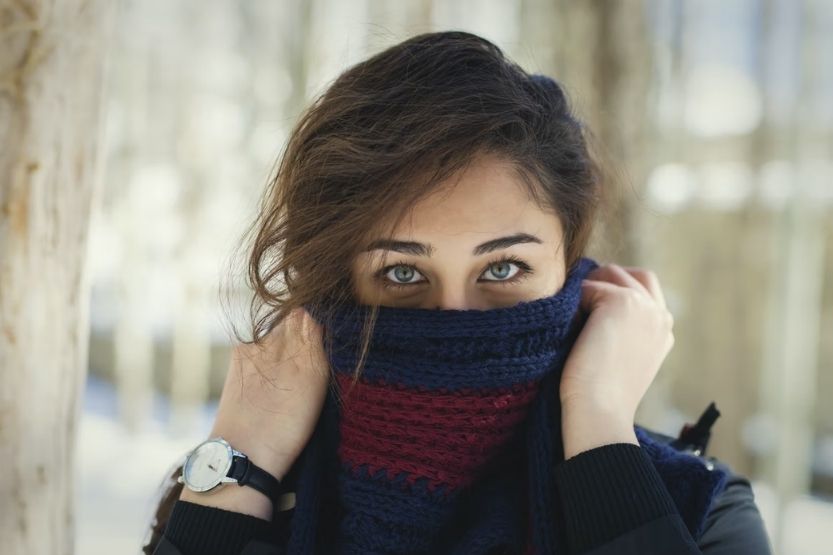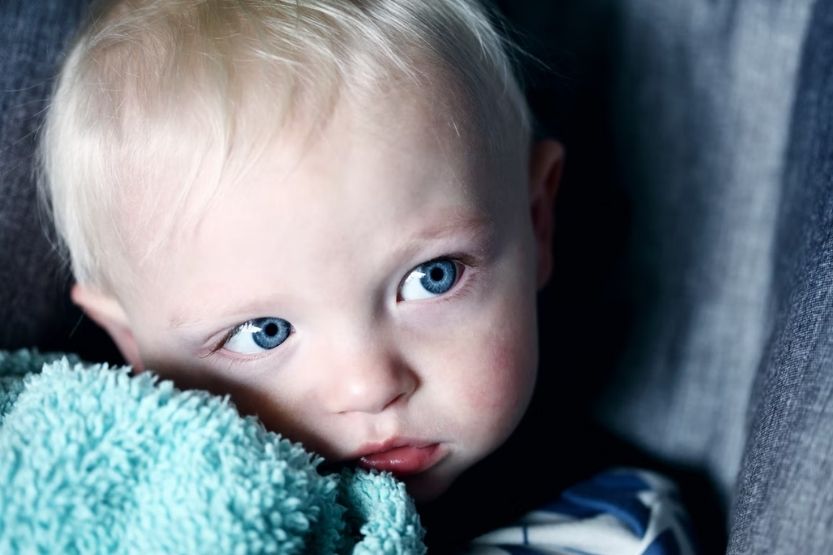Most people commonly assume that blue eyes can only be seen in Caucasians. Don’t you know that there are Asians whose eyes are blue? Asian with blue eyes – can this be natural?
In Northern and Eastern Europe, it is common to see people with blue eyes, especially in the surrounding areas of the Baltic Sea. It is not commonly known that there are also people with blue eyes in Central Asia, West Asia, and South Asia.
In one of their studies, researchers at Stanford University have found out that most babies born with blue eyes are Caucasian. Babies born of Asian, Hispanic, and other ethnic groups often have brown eyes. But that does not dispel that some are born with blue eyes.
Read on to learn more about Asians with blue eyes and if this is a natural occurrence.
Asian With Blue Eyes – Can This Be Natural?

Possible to See a Blue-eyed Asian
You can often see people of Northern and Eastern European ethnicity with blue eyes, especially those who live in the surrounding areas of the Baltic Sea. But there are also people in Central Asia, South Asia, and West Asia who have naturally blue eyes. So, it is possible to see a blue-eyed Asian.
Most Babies with Blue Eyes Are Caucasian
A study conducted by Stanford University researchers revealed that most babies with blue eyes are Caucasian. Babies of other ethnic groups, including Hispanics and Asians, are predominantly born with brown eyes.
Dark Brown and Brown Eyes Are Common in Southeast Asia, East Asia, and Africa
Dark brown eyes and brown eyes are common in people in Southeast Asia, East Asia, and Africa. People with light brown eyes are usually in the Americas, Europe, and West Asia. However, this does not preclude the fact that there are Asians who have naturally blue eyes.
People with Blue Eyes Have One Common Ancestor
New research shows people with blue eyes have one common ancestor. The scientists who conducted this research could track down a genetic mutation around 6,000 to 10,000 years ago.
They believe that this is the cause of the blue color of all human beings with blue eyes that are alive today.
How Can Asians Have Blue Eyes?
Some East Asian and Chinese People Have Blue and Green Eyes
It is not common knowledge that there are East Asian and Chinese people who have blue and green eyes – naturally and not by artificial means. As per scientific postulations, there are two ways this can occur.
These people are not wearing contact lenses to make their eyes blue or green. Their eye colors are natural to them. They are born with it.
Due to Gene Mutation
These people have natural blue or green eyes because of a gene mutation or inherited from their parents who have European ancestry on both sides and carry either the blue or green allele. An allele is a variant form of a gene.
Origins of Blue Eyes
In the past, geneticists have not been able to find the reason why some people have blue eyes.
However, in 2008, a research team from Copenhagen University traced back the origins of blue eyes to one individual who lived way back around 8,000 years ago around the northwest area of the Black Sea.
According to Professor Hans Eiberg, the research team leader, the specific place was in the northern part of Afghanistan.
Single Mutation in the Gene Called OCA2
In the report published in the magazine “Human Genetics,” the researchers identified a single mutation in the gene called OCA2, which only came about by chance.
This particular gene mutation does not produce a blue iris. But instead, it shuts off the mechanism by which the brown melanin pigment is produced. Prof. Eiberg clarified that we all initially have brown eyes.
Most people who see blue eyes in Asians assume that these people are only wearing blue contact lenses to make their eye color look blue.
As opposed to what many people assume, blue eyes and green eyes do exist naturally among people with East Asian and Chinese ancestry. One of the reasons is a gene mutation, as mentioned above.
Asian with Caucasian Ancestry
Another reason for an Asian with natural blue eyes is if the Asian person has Caucasian ancestry on both parents who are carriers of the gene with that particular eye color.
For instance, an Asian or Chinese couple who has brown eyes can give birth to an infant with natural blue eyes or green eyes – if the gene for blue or green color exists anywhere within both parent’s ancestral line.
Celebrities Who Are Not Caucasians But Have Blue Eyes
Some actual people who are not Caucasians but have blue eyes include Tyra Banks, Rihanna, and Vanessa Williams. Plus, Aishwarya Rai, an Indian actress, also has blue eyes.
Alexa Chung is a popular TV presenter, and fashion model with European ancestry yet has blue eyes. Another celebrity, Kristin Kreuk, an actress of Chinese ancestry, has green eyes.
Why Asians Can Have Blue Eyes

Very few Asians have blue eyes. Most of them have dark brown eyes. Some have light brown eyes, while others have dark brown eyes that look almost black. But you can’t deny that some of them have blue eyes. How can this happen? There are three scenarios why this could occur:
1. Have the Classic Blue-Eyed Allele
As I’ve already mentioned, scientists at the University of Copenhagen were able to track down the origin of the blue-eyed allele near OCA2 in Europe around 6,000 to 10,000 years ago. Some say it occurred about 8,000 years ago.
Recessive Classic Blue-eyed Allele
Since the classic blue-eyed allele is recessive, every blue-eyed individual would have ancestry in Europe on both sides of their parents. The ancestor of a blue-eyed person could be very, very ancient. It could be hundreds of years or generations ago.
Blue-eyed Chinese People
For example, in China, those who live in the Zhelaizhai village and the Hmong people are generally blue-eyed. Most likely, this is due to the influx of European invaders who settled in those lands hundreds of years ago.
Although there is not even one scientific study, these people are the subject of many internet posts. The ancestors of these blue-eyed Chinese could also be more recent. Through trade, Europeans have repeatedly contacted the Chinese people throughout the centuries.
One example is Alexa Chung, which I already mentioned a while ago. This British TV personality must have gotten her blue eyes from her British mom.
2. Carry Other Genetic Variants
Classic Blue-eyed Allele
Even if some Asians do not carry the classic blue-eyed allele, they could still have a blue-eyed allele. It is indeed possible. There could be a gene inside them that is so different that it can give rise to their blue eyes.
Nor Enough Research on Lighter-eyed Asians
Unfortunately, there is not enough research done on lighter-eyed Asians to determine the cause of blue eyes. There could be rare Asia-specific mutations that can produce lighter-colored eyes in Asians. Scientists have recently discovered the genes that produce the different shades of brown eyes.
Waardenburg Syndrome
With that said, there are some exceptions. For instance, researchers have discovered that Waardenburg syndrome, a genetic condition, is responsible for the blue eye color of the inhabitants of the Buton and islands in Indonesia.
This Waardenburg syndrome produces pigmentation differences, but it also causes deafness. This example shows how genes unrelated to OCA2 can produce blue eyes in people.
3. Asian with the Classic Blue-Eyed Allele Can Still Have Darker Eye Color
Genetic Predictions Are Not Often Carried Over from One Ancestry Group to Another
While the blue-eyed allele is rare in Asians, many have it. In that respect, why are there only a few Asians who are blue-eyed? The fact that genetic predictions are not often carried over from one ancestry group to another might be one of the reasons.
It is established that the classic blue eye allele in Europeans typically leads to lighter brown eyes in Asians. So, even if a person has the classic blue eye allele, they still need to interact with several other genes to create blue eyes.
Absence of Modifier Genes
So, even if you have the classic allele but don’t have the modifier genes, your eyes will be an almost lighter brown. Even if you carry the blue-eyed allele, your eyes will not be blue.
Blue-eyed Asians Can Still Be Traced Back to European Ancestry
However, if you have European ancestry, your chances of having blue eyes will increase because you have the classic blue eye allele and the other modifier genes. In other words, blue-eyed Asians can still be traced back to European ancestry.
They can still be harder to produce because you have to simultaneously have both the traditional blue eye allele and modifier genes. And both of them have to come from your European ancestor.
Again, do many Asians have blue eyes? Having blue eyes is rare in Asians but not unheard of. Several genetic factors could make this possible.
Indonesians Who Have Natural Blue Eyes
We come to an Asian group of people with naturally blue eyes for a different reason, unrelated to the blue eye allele or European ancestry. These blue-eyed Asians live on Buton Island, a secluded island in the Sulawesi Region in Indonesia, far from civilization.
Photographer Korchnoi Pasaribu, a geologist, practically discovered these Indonesians. His pictures of these Indonesians went viral because of their clear blue eyes.
These Indonesians belong to a small group of the Buton tribe. And apparently, their blue eyes resulted from a rare genetic disorder called Waardenburg syndrome. This disorder also causes congenital hearing loss aside from other pigmentation deficiencies.
The syndrome, researchers believe, is caused by mutations in any number of genes that determine the migration and division of neural crest cells while the embryo is in the early stage of development.
Buton, the island where these people live, is covered mainly by virgin rainforest. The area of the island is roughly 4,408 square kilometers. It is Indonesia’s 19th largest area and the world’s 129th largest island.
Facts About Eye Color
1. Eye Color Can Change After Several Months from Birth
If you are blue-eyed, you will be interested in knowing that you are among the few. More people on this planet have brown eyes than blue. Eye color also can change after several months from birth.
This is what you can glean from a study conducted at Stanford University in 2016. The study involved 192 newborns. The researchers used two-thirds of the infants born with brown eyes in this study, while about 1 in 5 babies were born with blue eyes.
2. Most Babies Born with Blue Eyes Have Parents Who Are Caucasians
The researchers also noted that most babies born with blue eyes have parents who are Caucasians. Infants with Asian and Hispanic parents were born with brown eyes.
3. Brown Is the Most Common Eye Color
The most common eye color in our world is brown.
Can You Have Both Blonde Hair and Brown Eyes?
4. Blue Eyes Are Relatively New
The first occurrence of blue eyes in humans was traced back to just one single mutation that occurred only about 6,000 to 10,000 years ago.
5. Waardenburg Syndrome Is the Reason Behind the Blue-eyed Buton Tribe Members
A rare genetic disorder, Waardenburg syndrome, affects one out of 40,000 people. Some scientists believe this is the reason why the members of the Buton tribe in Indonesia have blue eyes.
In some respect, those affected by this condition have eyes of different colors. Other symptoms include loss of hearing and white patches on skin and hair.
There is another rare condition known as heterochromia iridis or simply heterochromia. Recent estimates say that less than 200,000 Americans have this condition. People who have this condition have two different eye colors. The color of one eye is very different from the color of the other eye.
What Is the Rarest Eye and Hair Color?
Why Blue Eyes Are Rare

Due to Allele Frequency
People with blue eyes are rare. Why? It is all about Allele frequency. It is the percentage of chromosomes that carry the chosen allele. To illustrate this concept, let’s say we have five individuals, where each person has two chromosomes that result in their eye color.
In this scenario, the allele frequency is 50% (5 out of 10 chromosomes), even if just 20% of them (one out of five people) have blue eyes. So, the percentage of those who have blue eyes is lower than the allele frequency.
How Does Allele Frequency Apply to Actual People with Blue Eyes?
Let’s take China as our example. The Chinese people have an allele frequency of around 10%. By doing simple math, you can estimate that 1% of the Chinese people should have blue eyes.
However, one percent is relatively high. Considering China’s total population of 1.4 billion, 14 million Chinese have blue eyes. The number is considerably lower than that.
It is apparent that when it comes to these things, there’s a lot more that you need to consider and not limit the discussion to just one ‘blue-eyed allele.’
Blue Eye Trait Can Show Up in an Infant After Many Generations
We have already seen that Asians can have blue eyes. This phenomenon occurs when the classic blue-eyed allele enters a family from a European ancestor – possibly from long ago.
Blue eyes can show themselves up in an infant after many generations – if both parents have this classic blue eye allele. However, eye color is not just simply a physical trait. It needs all the required genes to interact to produce blue eyes.
So, there must be another reason if there are Asians with blue eyes and not even a single European ancestor in their family lineage. More research is needed to explain blue eyes in Asians that seem to come out of the blue.
Frequently Asked Questions
Asians with blue eyes is a very intriguing topic. It can spark many questions for those who have just become aware of it. To help you better understand, read the following answers to the most often asked questions about this subject:
Is It Common for Asians to Have Blue Eyes?
No, it is not. Brown eyes are the most common eye color of Asians. Blue eyes are most commonly seen in Northern and Eastern Europeans, particularly those living near the areas of the Baltic Sea.
However, there are some blue-eyed Asians that you can find in Central Asia, West Asia, and South Asia.
Where Did Blue Eyes Come From?
A recent study conducted by researchers and geneticists at Copenhagen University revealed the origins of blue eyes. Blue eyes are a recent occurrence – if you will consider how old the earth is.
That study showed a single mutation in the gene OCA2, which resulted in blue eyes. The researchers estimated that it occurred around 8,000 years ago. Some say it happened between 6,000 to 10,000 years ago.
What Is the Most Common Eye Color of People in This World?
The most common eye color on earth is brown.
Are Blue Eyes Rare?
Those who have blue eyes are rare.
In Closing: Is Asian With Blue Eyes Natural?
People with blue eyes are commonly seen in Northern and Eastern Europe, particularly in the surrounding areas of the Baltic Sea. However, some people have blue eyes outside of these geographical areas.
It is not common knowledge that some native people who live in Central Asia, West Asia, and South Asia also have blue eyes.
People can also have blue eyes if they have underlying medical conditions. One of these conditions is the Waardenburg syndrome. The other condition is heterochromia iridis. Due to their medical conditions, people who have blue eyes can also have other ailments.

![Too Much Makeup - How Much Is Too Much? [With Example Pictures] too much makeup](https://howchimp.com/wp-content/uploads/2021/04/too-much-makeup-300x200.jpg)


![Baby Brown Recluse Spider: How to Identify, Is It Dangerous? [With Pictures] baby brown recluse](https://howchimp.com/wp-content/uploads/2021/05/baby-brown-recluse-300x200.jpg)
![Read more about the article High Nose Bridge – What Is It? Vs Low Bridge? How-to Shape?]](https://howchimp.com/wp-content/uploads/2022/06/high-nose-bridge-300x200.jpg)

